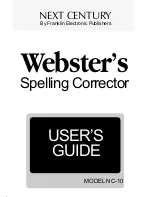
36
Chapter 3
Software
Function
Description
Advanced
Click to display the binary bit pattern.
GetID
Click to display the binary bit pattern captured from the card.
Start Bit
Enter a number to define the left most significant starting bit for the
field.
Bits
Enter the number of bits to add to the Start Bit to define the range of bits
in
the
field.
Digits
This is the number of digits that will display in a selected field.
Up
Click to move the highlighted field up one position.
Down
Click to move the highlighted field down one position.
Advanced Button
This displays the bit ranges of the card.
Click each field button to display the location of the card binary data. In the example below, the
Personal ID starts at bit 111, is 50 bits long, and is 10 digits. The Bit Range is 111 .. 160 and the card
bit pattern is highlighted. This output format is displayed in binary coded decimal with parity (BCD
with Parity). This is the 245 bit configuration. If any additional keystrokes were entered to precede the
card data, click Clear to remove them.
Note: The message that displays the number of bytes used and how much room for keystrokes
above the
Advanced
button is determined by the device’s flash memory. In this example the
configuration is: “Keystrokes: 8 of 32 bytes used. Room for 14 keystrokes.” Every field is 15
keystrokes maximum. All fields share 96 bytes.
The Bit Range that displays to the left of the binary bit pattern is the Start Bit field total + the
Bits field total – 1.
Summary of Contents for pcProx Plus
Page 1: ...99009010 Rev U pcProx Plus pcProx Enroll Wiegand Converter Configuration Utility User Manual...
Page 6: ...ID Card Reader System Output Formats 6 Chapter 1 The Basics...
Page 10: ...10 Chapter 2 Hardware Interface Connectors OUTPUT CONNECTORS T...
Page 34: ...34 Chapter 3 Software GetQueuedID Data Display HH MM SS displays 00 00 06...
















































